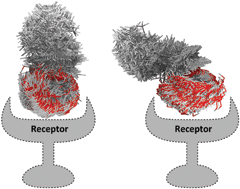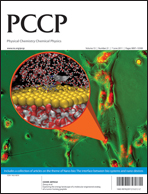Complexity in molecular recognition
Abstract
The anomer selectivity of artificial carbohydrate receptors was studied using in silico methods in order to shed light on the thermodynamic driving forces at work during molecular recognition in general. The contributions of relevant intermolecular hydrogen bonds were investigated by means of generalized compliance constants in order to dissect important from less important non-covalent interactions. Even at this moderately low rung on the ladder of complexity essential aspects of molecular recognition are not explainable in terms of additive intermolecular interactions. Though molecular recognition seems to be a complex and emergent property, a rationale for the diastereoselectivity of carbohydrate receptors was obtained by a combination of


 Please wait while we load your content...
Please wait while we load your content...